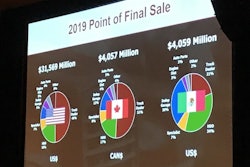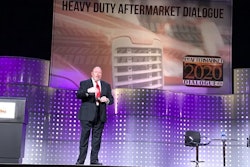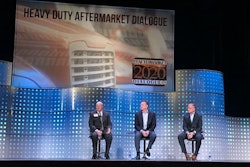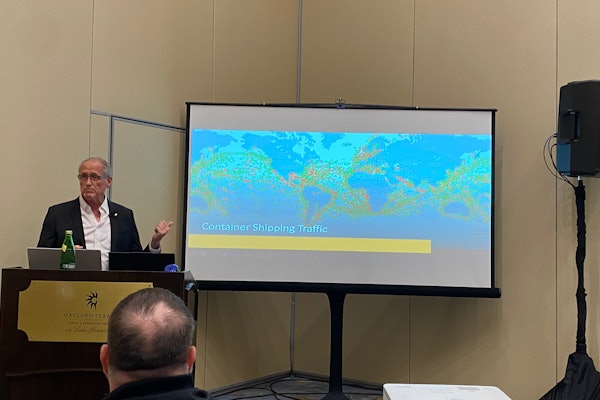
Regarding the U.S.-Mexico-Canada Agreement (USMCA), also known as the new NAFTA, Wilson said, “We understood when the President said we need to renegotiate NAFTA and that it was important for the country to have a new agreement, we wholeheartedly agreed with him. But we knew that agreement had to create a stable North American environment. We also knew the content of the agreement could not increase the cost of manufacturing whether it’s in the United States, Canada or Mexico. The negotiations were not without their challenges and the finalization of the agreement will not be without it challenges.”
Wilson thanked the industry for helping MEMA understand how important the implications of the USMCA is to their businesses.
“We’re very of proud of the efforts of the industry and the business community,” she said. “We worked very hard to get it ratified in the House and the Senate and we’re going to continue to work so the implementation makes sense for all of you.”
The U.S., Canada and Mexico negotiated an agreement that was finalized in 2018. In 2019, President Trump took a “very powerful” step by releasing any of the tariffs on steel and aluminum coming from Canada and Mexico. That set the stage for Mexico’s government to approve the agreement, Wilson said, adding that Canada is expected to sign off on the USMCA early next month.
The next phase is the regulatory process, which is critical, Wilson said, because it is going to provide the rules of the road of how this new agreement is going to be implemented.
The agreement will include language pertaining to “every single one of your tariff codes,” she said. “It’s mind-bending … but understand that is how this agreement is put together and it’s how it’s going to drive the content requirements and anything else that you have to do.”
The USMCA has two provisions that are a reflection of the President’s concern to increase manufacturing in the United States, Wilson said. First is steel and aluminum content, which is a vehicle manufacturer requirement. “They have to be able to demonstrate they have purchased 70 percent of their steel and aluminum from North America.
“The other is a labor value content. The labor value content says you have to demonstrate that 45 percent of the labor of the value of the vehicle has been made with labor that makes $16 or more an hour. The vehicle manufacturers are the ones who are primarily concerned with this,” she said.
“There are two ways vehicle manufacturers can meet this requirement. One is they can do it themselves or they can meet it through their supply base. For the heavy vehicle industry, this particular provision will start Day One,” Wilson said.
Wilson urged attendees to create USMCA teams within their companies. “You need to have a cross-sectional team within your company that’s looking at this. You need to make sure you understand the regulations,” she said.
Wilson also briefly addressed China Sec. 301 tariffs.
“The [Trump] administration has made it clear that they believe China is the No. 1 enemy of manufacturing in the United States and the best way to deal with the issues with China is to put tariffs on goods and keep those tariffs on goods until China changes its practices,” she said.
U.S. and China announced Phase One of the trade agreement earlier this month. Phase One only affects the fourth tranche of tariffs.
“There’s tranche 1, 2 and 3, which are at 25 percent. This affects most finished components coming into the United States, as well as motors and other inputs you might have for manufacturing,” Wilson said.
“The real question is when are we going to have Phase Two? Most people think we we’re not going to see Phase 2 until after the elections so you need to pay attention if you’re in 1, 2 or 3 of any extensions that might be out there for your exclusion process to make sure you understand and can benefit from those exclusions because the exclusions are the only game out there right now,” she said.










